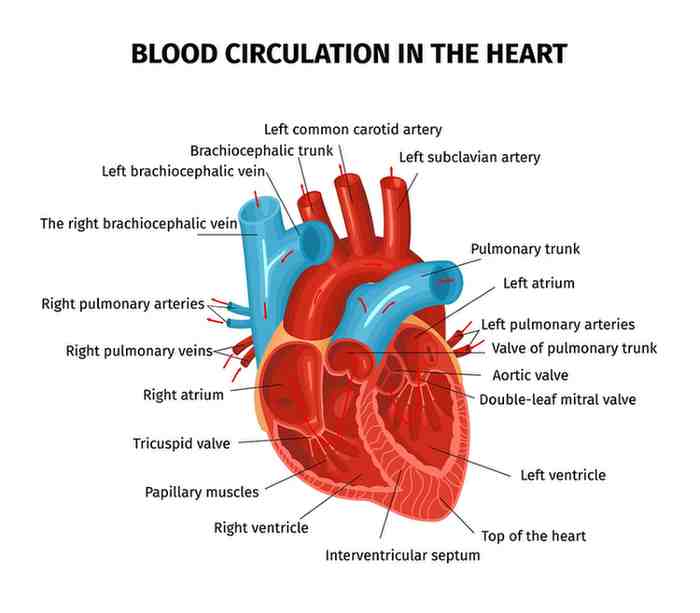A Comprehensive Review
Cardiovascular diseases (CVDs) continue to be a leading cause of global mortality, emphasizing the importance of preventive measures and holistic approaches to health. Yoga is an ancient practice that combines physical postures, breath control, meditation, and ethical principles, has gained immense popularity for its numerous health benefits. In recent years, there has been increasing interest in exploring the potential role of yoga in promoting cardiovascular health. This comprehensive review aims to analyze the existing research on yoga’s impact on cardiovascular health and shed light on its potential benefits.

Cardiovascular Disease: A Global Health Challenge:
Cardiovascular disease encompasses various conditions affecting the heart and blood vessels, including coronary artery disease, stroke, heart failure, and hypertension. According to the World Health Organization (WHO), CVDs are responsible for nearly 18 million deaths globally each year, accounting for approximately 31% of all global deaths. Risk factors such as sedentary lifestyle, poor dietary habits, stress, and smoking contribute significantly to the prevalence of CVDs. As a result, interventions promoting physical activity, stress reduction, and lifestyle modification have become crucial components of cardiovascular health management.
Yoga: An Ancient Practice with Modern Relevance:
Originating in ancient India, yoga has evolved over thousands of years and has been embraced worldwide for its physical, mental, and spiritual benefits. The physical aspect of yoga, known as Hatha yoga, involves postures (asanas) and breath control (pranayama), which enhance flexibility, balance, and strength. Additionally, the meditative and mindfulness aspects of yoga help reduce stress, anxiety, and depression. These combined elements of yoga hold promising potential in positively impacting cardiovascular health.
Effects of Yoga on Blood Pressure:
Hypertension, or high blood pressure, is a significant risk factor for CVDs. Several studies have examined the effects of yoga on blood pressure regulation, demonstrating that regular yoga practice can lead to modest reductions in both systolic and diastolic blood pressure. Yoga’s ability to improve vascular function, promote relaxation, and reduce sympathetic nervous system activity contributes to these blood pressure-lowering effects.
Yoga and Lipid Profile:
Elevated levels of cholesterol and triglycerides in the blood are associated with an increased risk of heart disease. Studies exploring the impact of yoga on lipid profiles have reported beneficial effects, including reductions in total cholesterol, LDL cholesterol (“bad” cholesterol), and triglycerides, while increasing HDL cholesterol (“good” cholesterol). These findings suggest that yoga may play a role in lipid management and cardiovascular risk reduction. Despite these differences, all forms of yoga share the common goal of cultivating self-awareness and promoting unity between the mind, body, and spirit.On the other hand, the world of yoga offers a diverse range of practices, each with its unique focus and techniques.
Yoga and Stress Reduction:
Chronic stress has been linked to the development and progression of CVDs. The practice of yoga, with its focus on breath control and mindfulness, has shown to lower cortisol levels, the hormone associated with stress. By promoting the relaxation response, yoga may mitigate the harmful effects of chronic stress on the cardiovascular system.
Furthermore, the myriad benefits of yoga extend beyond the physical realm. Not only does it enhance flexibility and strength, but it also promotes inner balance and mindfulness. Additionally, yoga has been shown to reduce anxiety and depression through its focus on deep, controlled breathing and meditation. Furthermore, yoga’s holistic approach addresses both the body and the mind, fostering a sense of overall well-being that is often elusive in today’s hectic world. Moreover, its versatility makes it suitable for people of all ages and fitness levels.
Yoga and Endothelial Function:
Endothelial dysfunction, characterized by impaired blood vessel function, is a key early event in atherosclerosis, the buildup of plaque in arteries. Research has suggested that yoga improves endothelial function, enhancing blood vessel dilation and reducing inflammation. These improvements may contribute to better vascular health and reduced risk of CVDs.
Yoga and Autonomic Nervous System:
The autonomic nervous system (ANS) regulates involuntary bodily functions, including heart rate and blood pressure. Yoga has been shown to influence the ANS, leading to increased parasympathetic activity (associated with relaxation) and decreased sympathetic activity (associated with the stress response). This rebalancing of the ANS may play a role in cardiovascular health by reducing heart rate and blood pressure variability.
Yoga for Secondary Prevention:
Yoga’s benefits extend beyond primary prevention, making it a potentially valuable complementary therapy for individuals with existing cardiovascular conditions. Studies have explored the use of yoga as an adjunct to standard medical care in post-heart attack patients, heart failure patients, and those undergoing cardiac rehabilitation. The results suggest that yoga can improve quality of life, exercise capacity, and psychological well-being in these individuals.
Conclusion:
Yoga is a multifaceted practice with substantial potential in promoting cardiovascular health and overall well-being. Its combination of physical postures, breath control, meditation, and mindfulness addresses key risk factors for CVDs, including hypertension, dyslipidemia, stress, and endothelial dysfunction. By integrating yoga into comprehensive lifestyle interventions, healthcare professionals and individuals alike can harness the power of this ancient practice to enhance cardiovascular health and reduce the burden of cardiovascular disease.
As research in this field continues to grow, yoga’s position as a valuable complementary approach to cardiovascular disease prevention and management is becoming increasingly apparent. Thus, promoting the integration of yoga into public health initiatives may hold the key to improving cardiovascular outcomes on a global scale.

